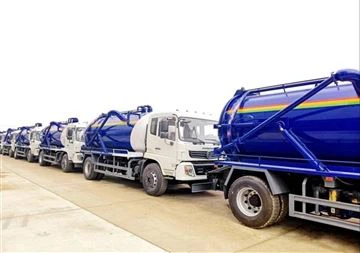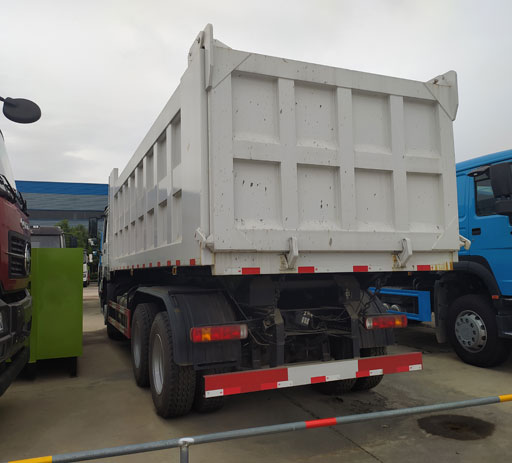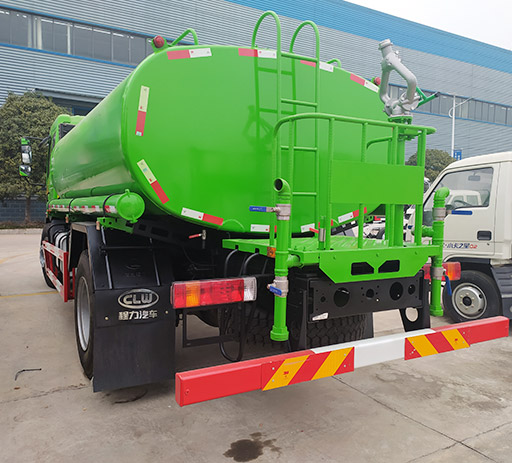Curb Sweeper: An Essential Guide for Clean Streets and Efficient Maintenance

In urban environments, maintaining clean and safe streets is crucial for public health, aesthetics, and the overall quality of life. One of the primary tools for achieving this is the curb sweeper. This comprehensive guide will delve into everything you need to know about curb sweepers, from their operation and benefits to maintenance tips and frequently asked questions.
What is a Curb Sweeper?
A curb sweeper is a specialized vehicle designed for cleaning streets, gutters, and other paved surfaces. Typically used by municipalities and contractors, these machines are equipped with rotating brushes and suction systems that effectively remove debris, dirt, and pollutants.
Types of Curb Sweepers
Curb sweepers come in various types, each tailored for specific cleaning applications. The main categories include:
1. Vacuum Sweepers
These machines utilize a powerful vacuum system to collect debris and dust. Vacuum sweepers are highly effective in urban settings where fine particles are prevalent.
2. Mechanical Sweepers
This type uses rotating brushes to lift debris from the road surface. Mechanical sweepers are ideal for collecting larger debris, such as leaves and gravel.
3. Regenerative Air Sweepers
These sophisticated models use a combination of air jets and vacuum systems to clean streets. They are known for their efficiency and low water usage, making them environmentally friendly.
Benefits of Using Curb Sweepers
Utilizing curb sweepers offers numerous benefits for urban areas, including:
1. Improved Public Health
By keeping streets clean, curb sweepers help reduce the risk of diseases caused by accumulated waste and pollutants.
2. Enhanced Aesthetics
Regular street cleaning enhances the visual appeal of urban areas, promoting tourism and community pride.
3. Environmental Protection
Curb sweepers play a crucial role in removing pollutants before they enter the stormwater system, aiding in the protection of local water bodies.
4. Cost-Effectiveness
Investing in regular sweeping can save municipalities money in the long run by prolonging the lifespan of road surfaces and reducing repair costs.
How Do Curb Sweepers Work?

Curb sweepers operate through a combination of mechanical action and suction. Here’s a general overview of the process:
1. Debris Collection
The curb sweeper’s rotating brushes loosen debris from the road surface. This can include dirt, leaves, plastic, and other refuse.
2. Suction Mechanism
Once the debris is gathered, the suction system collects it into a hopper for disposal. The vacuum maintains a strong airflow to ensure efficient collection.
3. Dust Control
Many modern curb sweepers are equipped with dust control technology, such as water sprays, to minimize airborne particles during operation.
Choosing the Right Curb Sweeper for Your Needs
When selecting a curb sweeper, several factors must be considered:
1. Size and Maneuverability
Assess the size of the areas you will be cleaning. Smaller, compact models are ideal for narrow city streets, while larger models are better suited for open areas.
2. Cleaning Capability
Consider the type of debris you need to remove. If you frequently deal with fine dust and sand, a vacuum sweeper may be best, while mechanical models are better for bulkier waste.
3. Environmental Impact
Look for eco-friendly options with features that minimize water use and emissions.
Practical Examples and Operational Tips
1. Establishing a Sweeping Schedule
Creating a regular street cleaning schedule enhances cleanliness. Consider the following tips:
- Prioritize high-traffic areas and public spaces.
- Adjust the timing to coincide with low-traffic periods.
- Incorporate seasonal cleaning, especially in fall for leaf collection.
2. Training Operators
Proper training for curb sweeper operators is vital. Key aspects to cover include:
- Equipment handling and operational safety.
- Daily maintenance checks and troubleshooting.
- Environmental considerations, such as avoiding water wastage.
3. Maintenance and Care
Regular maintenance extends the life of curb sweepers. Important maintenance tasks include:
- Inspecting and replacing brushes.
- Cleaning air filters and ensuring the suction system is clear.
- Checking hydraulic fluids and making necessary repairs.
Curb Sweeper Technologies

Technology plays a significant role in the development of modern curb sweepers. Notable advancements include:
1. GPS and Fleet Management Systems
These systems allow for efficient route planning and real-time monitoring of sweepers in operation.
2. Automatic Control Systems
Many new models feature automatic controls for brush height and suction intensity, leading to improved efficiency.
3. Hybrid and Electric Options
With growing environmental concerns, manufacturers are introducing hybrid and fully electric versions of curb sweepers for reduced emissions.
Curb Sweepers in Action: Case Studies
1. City of San Francisco
San Francisco employs a fleet of vacuum sweepers powered by GPS technology, optimizing routes for efficiency and reducing operational costs.
2. Chicago Streets and Sanitation Department

Chicago’s use of regenerative air sweepers has proven effective in reducing street debris while minimizing dust pollution in residential areas.
3. Toronto’s Leaf Collection Program
Toronto implements a seasonal leaf collection program using mechanical sweepers, ensuring that public spaces remain clean during autumn.
Frequently Asked Questions (FAQs)
1. How often should curb sweeping be done?
The frequency depends on several factors, including location, season, and local regulations. Urban areas may require weekly or bi-weekly cleaning, while rural areas could be less frequent.
2. What is the average cost of a curb sweeper?
The cost of curb sweepers varies widely based on type and features, generally ranging from $100,000 to $500,000 for new models. Consider the initial investment alongside long-term maintenance costs.
3. Can curb sweepers collect leaves?
Yes, curb sweepers, particularly mechanical models, are designed to effectively collect leaves and larger debris.
4. Is it necessary to sweep curbs in residential areas?
Yes, maintaining clean curbs improves aesthetics and public health by reducing litter and pests, and it can help protect the stormwater drainage system.
5. Can I rent a curb sweeper for temporary use?
Many equipment rental companies offer curb sweepers for rent. This can be an economical option for temporary cleaning needs during events or special projects.
6. What safety measures should be taken during curb sweeping?
Operators should wear protective gear, ensure proper signage is placed around the work area, and maintain a consistent communication protocol with traffic control personnel.
